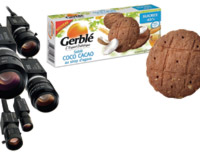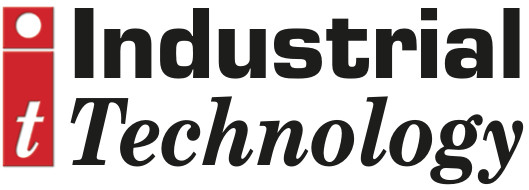
Posted to News on 26th May 2014, 00:00
Broken biscuits a thing of the past
A high speed vision system on a biscuit packaging line is raising quality through the prevention of the packaging of broken biscuits.

>Nutrition & Santé is one of Europe's leading makers of organic and health foods, guided for over 30 years by the very simple idea that what we eat affects our health. Biscuits roll off its production lines in stacks of four or five units that are then wrapped in packs and inserted in their cardboard packaging at high speed. For a company with a reputation for quality, the packaging of broken biscuits is simply unacceptable. "For us, broken biscuits are a critical defect," explains Fabien Ployon, production manager at Nutrition & Santé's production site in Annonay, France.
>To eliminate problems with broken biscuits, Nutrition & Santé assessed the potential for vision technology. "Not only did we want to increase our customers' perception of the quality of our products, we also wanted to eliminate the risks of packs being incorrectly sealed due to biscuit bits getting in the way," says Ployon. "We looked at the vision systems on the market and contacted a number of companies. All but Keyence declined on account of our speed requirements, which allows for a window of just 150ms for inspecting each stack.
>Nutrition & Santé needed a detection solution that could handle the huge quantities of biscuits that are processed each minute and operate around the clock. "We installed and programmed a CV-5000 vision system with the assistance of Keyence's technical department," says Ployon. "Edge detection/position is performed by two cameras placed about 20cm above the biscuits on each line. A different program has to be set for each of the thirty-odd shapes and sizes conveyed on each line."
>Edge detection/position is just one of the 19 inspection tools available with Keyence's CV-5000 vision systems. Each of the inspection tools makes it possible to setup a detection application simply and quickly. Ployon comments: "Despite not having any previous experience in vision systems, the CV-5000 was easy to set up and use. It took a little time to optimise it to our needs, but now we're familiar with it and we've since embarked on a process of continual improvement."
>This biscuit-inspection application was made possible by the processing speed of the CV-5000 system, one of the most powerful self-contained vision systems on the market. For example, it allows one million pixels to be processed in 20.5ms. This processing power also makes it possible to perform multiple inspections and further enhance the reliability of in-process inspections thanks to its repeatability, which Keyence claims is seven times higher than that of current standards, and image-processing tasks that optimise inspection accuracy.
>The CV-5000 Series vision systems are controlled by a high-speed colour image processing engine and a high-speed RISC CPU. Both are supplemented by two DSPs designed specifically for image processing. All CV-5000 Series models use these four processors to achieve parallel processing and attain the fastest processing speed possible - around twice that of the leading models available on the market according to Keyence. The system is also equipped with a double-buffer memory that allows it to accept the next trigger input while an image is being processed.
>"Because the CV-5000 vision system works faster than our lines, it gives us definite leeway," says Ployon. "It runs seven days a week and we're very satisfied with its detection reliability and stability."








